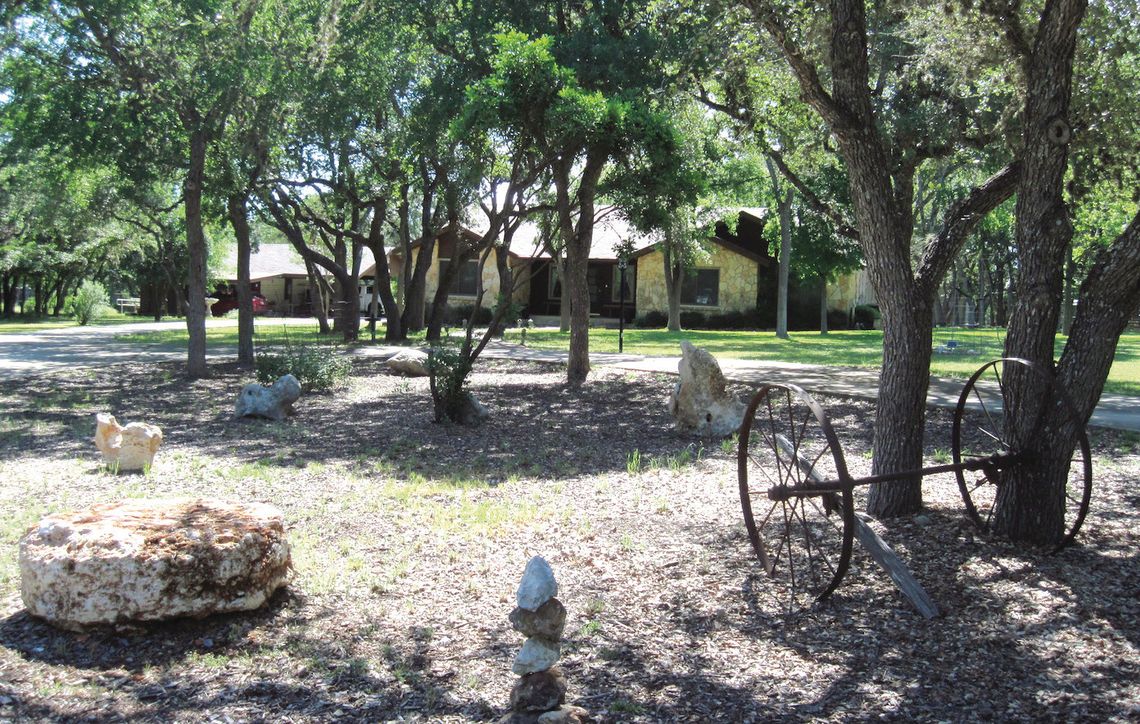Natural landscape offers shady oak lawn in the front and large, sunny mini-garden
Spring Lake Garden Club’s May Yard of the Month offers a double feature: a spacious oak-shaded front lawn beside a large sunny fenced garden in Country Estates, north of Old Ranch Road 12. The residence on Palomino Lane near Clydesdale Drive, owned by Bo Kelly and his late wife since the mid 1990s, included an in-ground garden enjoyed by the Kellys and their neighbors. But the advantages of raised beds prompted a complete renovation after Bo’s mother and sister, Kathie Epp, joined the household. After their mother’s passing last year, Epp focused on gardening in counter-height beds, built solely with repurposed lumber and recycled galvanized roofing from a house demolition found by her son Justin.
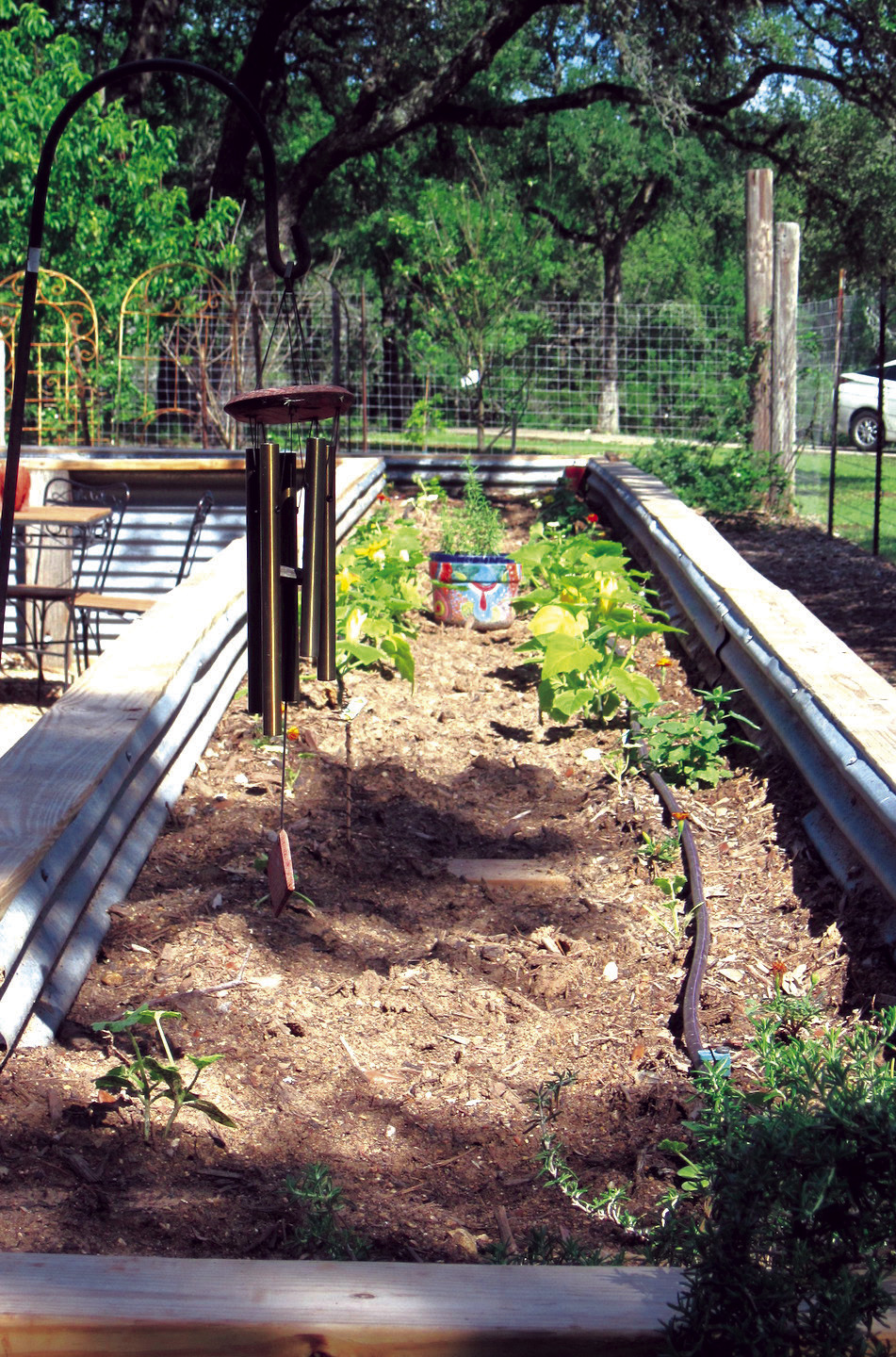
A raised bed with drip irrigation incorporates flowering plants beside the edible crop to manage insects.
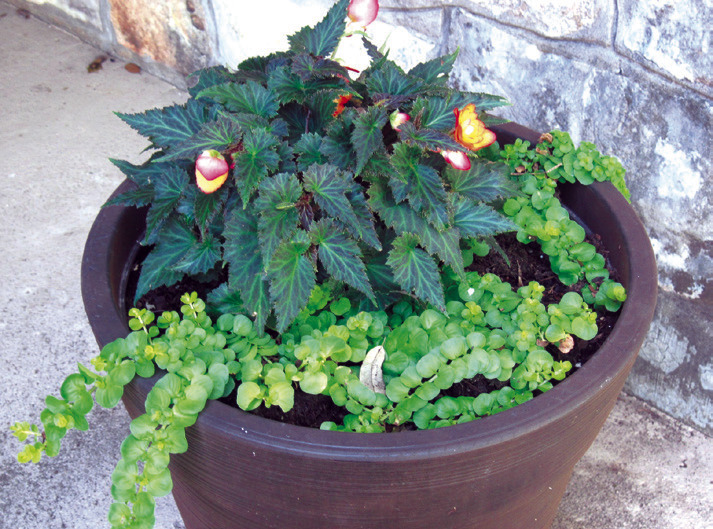
A pot of angelwing begonia and creeping jenny sit on the shady front porch.
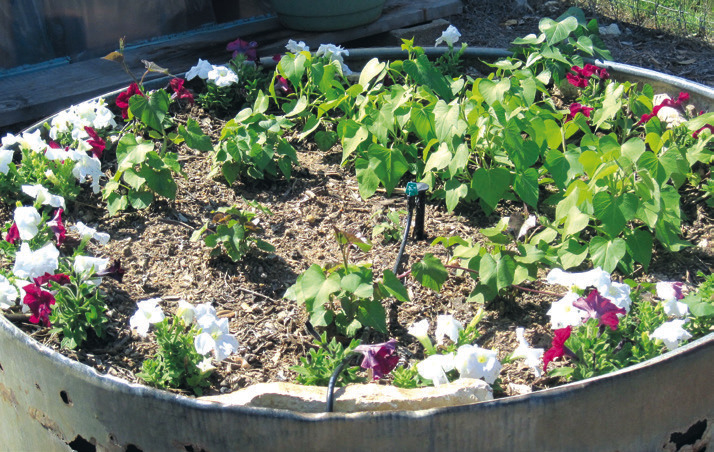
A ring of petunias edge araised bed of potatoes to act as a natural deterrence against beetles.
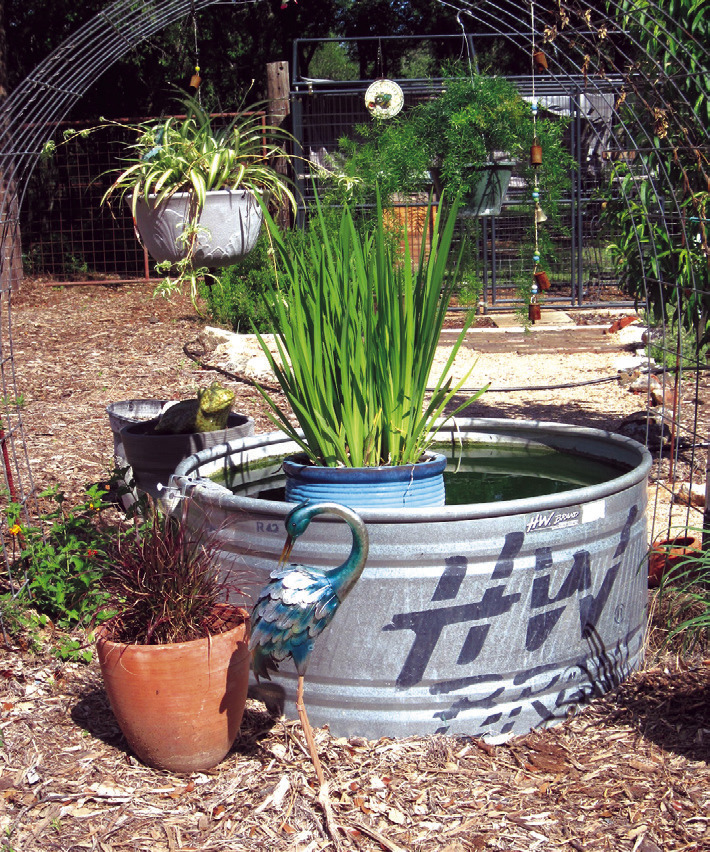
A cattle panel arbor protects a fish tank that provides liquid fertilizer for garden.
Starting a mini farm best describes the Kelly garden transformation, which now includes a fish tank and small orchard of fruit trees and blackberries inside the garden’s tall wire boundary fence. The area includes extensive rectangular beds, a few lower raised beds, and a hoop greenhouse covered in white plastic. With two wire wagon wheels leaning against its side, Epp claims the white hoop house looks like a covered wagon. A chicken coop and bee hives are located toward the back of the property, and the fish pond, protected with a wire arbor of cattle panel, provides liquid fertilizer as its water is drained and filtered for adding to timed drip irrigation for both orchard and raised beds.
Although the garden renovation is less than a year old, the greenhouse has already produced winter crops (broccoli, cabbages, cauliflower, and red lettuce), and a variety of vegetables are sprouting in the raised beds: cherry tomatoes planted beside basil and garlic, red potatoes and sweet potatoes with petunias to deter beetles, and marigolds blooming among other plants to manage insects. This “companion” planting, Epps explains, takes advantage of natural plant interactions to attract beneficial insects and discourage pests so pesticides are not required. Meanwhile, the gardeners still accommodates special requests from neighbors (“Are you going to plant okra?”) and grandchildren (“Where are the strawberries?”) Reflecting careful planning, the garden structure includes details such as hinged wire hoop that covers over some raised beds to support plastic or shade cloth to function as “mini greenhouses.” Framed with repurposed lumber and corrugated metal roofing, the beds were filled with decayed wood, rabbit manure, soil, and compost, and will be topped up as the soil mixture sinks. Drip irrigation services all the beds, and ground-level pipe is threaded through holes in bricks laid on their sides at pathway junctions, so lines remain below the path surface of pea gravel. These brick “landings” also offer a prominent site for large pots hosting specimen plants, such as colorful Guara lindheimeri or trailing herbs, or a plot of sun-loving plants. The fenced garden also includes small seating areas among the beds, and shadier areas host plants requiring some sun protection such as an elderberry bush, American beauty berry, and a pear tree.
Seats on the shady front porch of the house face a view of the circular entry drive and sunny curbside rock garden including red yucca, although its blooms are often browsed by deer. Boxwood and nandina serve as reliable foundation plants under large oaks near the house, and pots of angelwing begonia with creeping jenny provide welcome color and texture. Compared to the complex interactions of nearby garden plantings, this peaceful view of trees and grass underscores how plants affect our environment, both mental and physical.
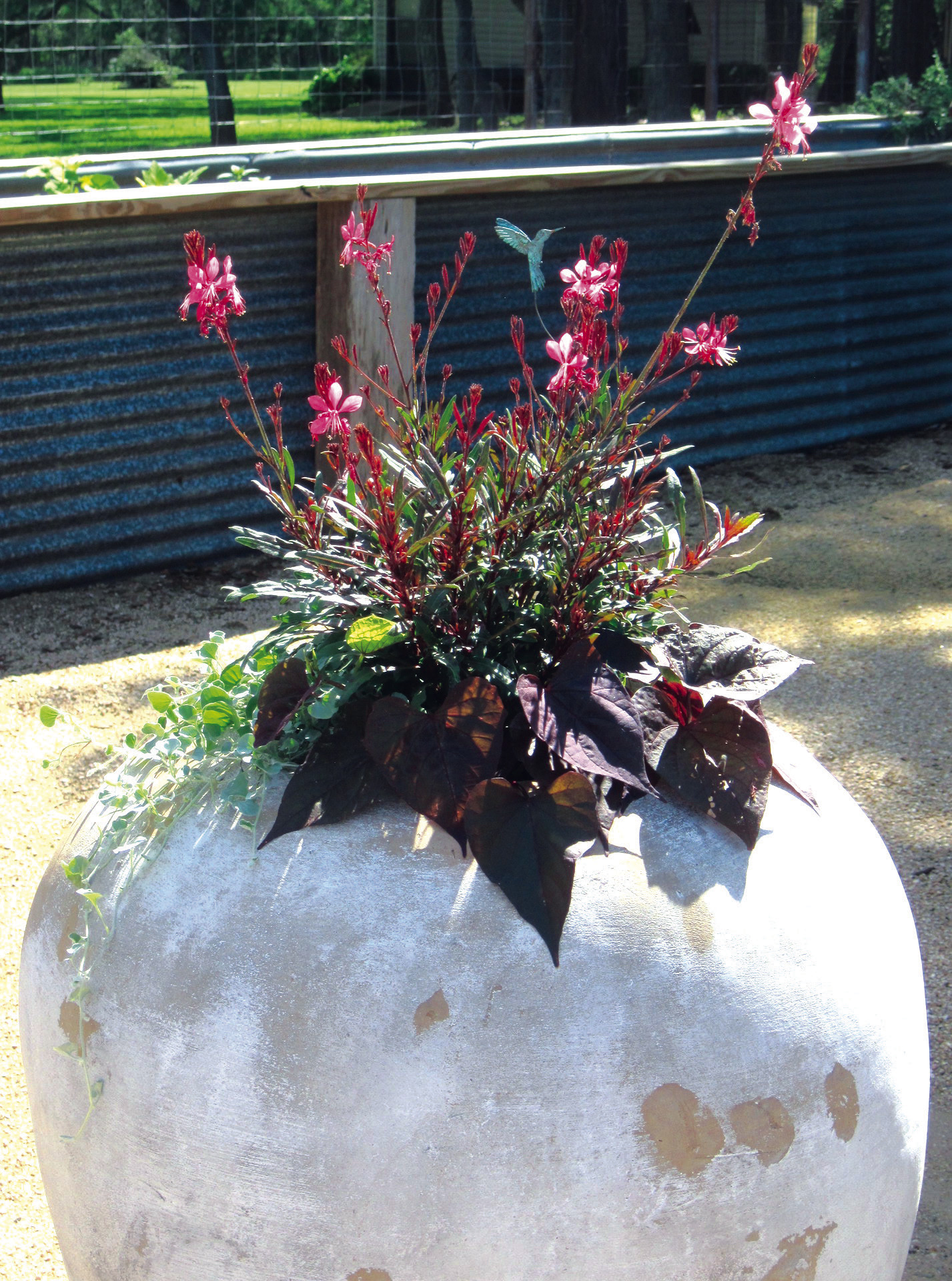
A decorative pot at the garden path crossing hosts Guara flowers with sweet potato vine and creeping jenny. Photo by Sharon Lockett


